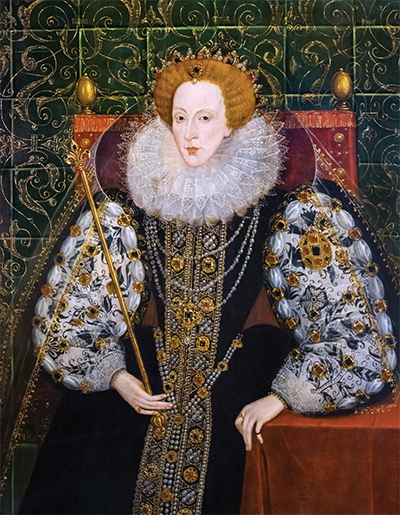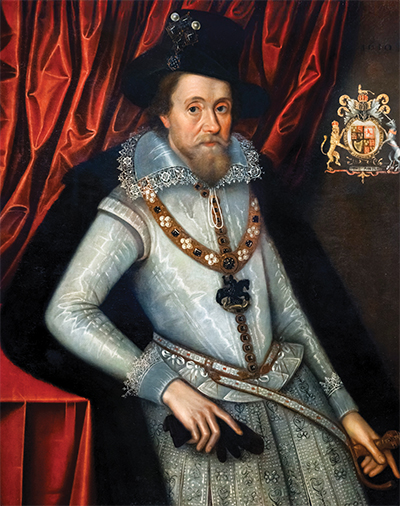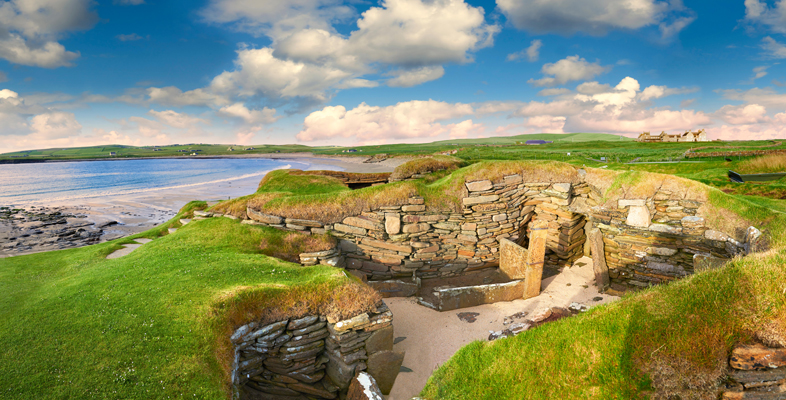2.2 A changing society: monarchs and church
The social and political changes which took place in the sixteenth century saw the erosion of the power of the Church of Rome. The growth and spread of Protestantism had a strong influence on the government and society in Scotland to the extent that by the 1560s the jurisdiction of the Church of Rome had ended and canon law began to play a lesser role as the Scottish courts took over the laws relating to marriage, legitimacy and succession.
Another factor impacting on the legal history of Scotland was the increased scope in the jurisdiction of the monarchy. In 1603 James VI, King of Scotland, also became the King of England (Elizabeth I of England had died childless and James VI was offered the crown). Whilst this united the two countries, with the union of the crowns in1603, both retained their individual and independent legal systems.


James VI called leading Scottish nobles down to London for regular meetings, and the Scottish privy council continued to convene in Edinburgh to manage day-to-day affairs. Meetings of the Scottish Parliament became increasingly rare. This fostered an increasing sense of isolation amongst the Scottish population who became cut off from their familiar and very hands-on monarchy. This, however, also provided an opportunity for the development of a new identity for Scotland.
Over the following decades, James VI and his successors became even less attuned to the interests of Scotland. Charles I relied on the advice of a handful of Scottish nobles living in London, creating a communications gap that allowed a surge of discontent to take him by surprise in 1637. By 1641, rebel Scots had forced Charles to concede powers to the Scottish parliament in Edinburgh. The settlement stated that the king’s officers were to be chosen by Scots, with parliament to meet at least every three years. But the instability created in England and Ireland by Scotland’s war with their shared king triggered rebellion in Ireland and civil war in England.
Following civil war and the execution of Charles I, the English and Scottish Parliaments took different routes. The English Parliament declared England as a republican commonwealth. The Scottish Parliament recognised Charles II as their King. Oliver Cromwell (as head of the new republican commonwealth and known as ‘Lord Protector’) carried out a military and constitutional campaign against Scotland. In 1651, the Scottish army were beaten and the Commonwealth government (the government established in England following the execution of Charles I) announced that no parliament, other than the Parliament of England, was to meet. Charles II was no longer King of Scotland. Scotland was granted the right to send 30 Members of Parliament (MPs) to Westminster (where the Parliament of England sat). The English Parliament at Westminster became a collective commonwealth of England, Scotland, Wales and Ireland. The Scottish legal system was suspended before being gradually restored. Scotland had been incorporated into a union.
Following the restoration of the monarchy in 1660 the Scottish Parliament was re-established in 1660. Scotland regained its independent legal system and the reigning monarch ruled through a series of commissioners. This period was then followed by what is known as the ‘glorious revolution’ of 1688–1689, which established a constitutional monarchy and limited the power of the monarch. It led to a period where Scotland and its parliament became more independent. At this time the first of the institutional writers began to emerge. They are discussed in Section 3.1.
